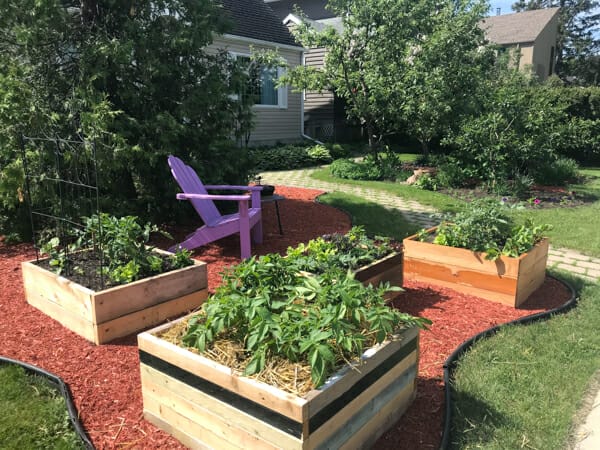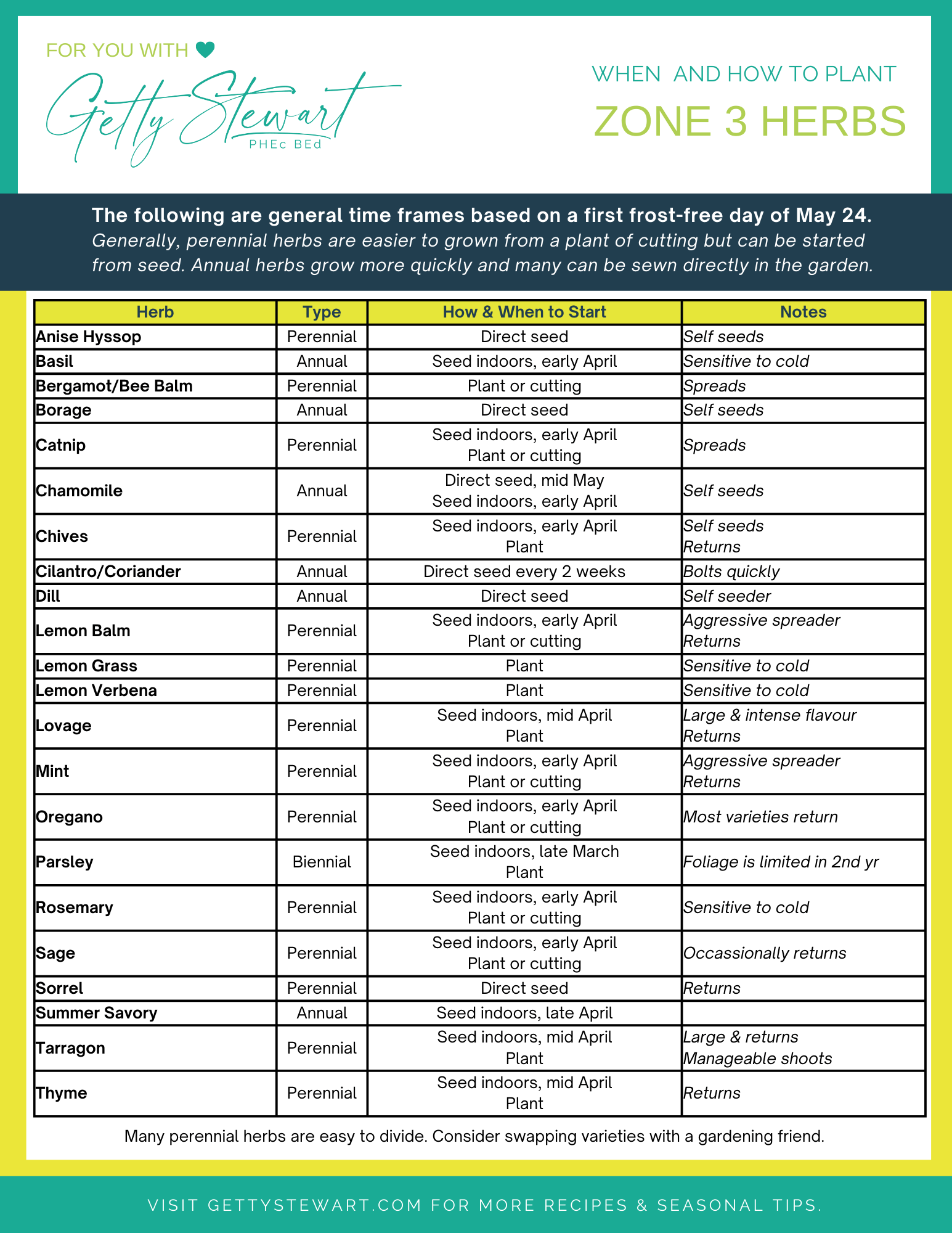Herb Growing Chart for Prairie Gardens
Here’s a Herb Growing Chart to go along with the Veggie Seed Starting Chart. It is intended for a Zone 3 garden which covers a good chunk of the Canadian prairies (give or take a few micro climates).

Read more: From Garden to Table: Everyday Cooking with Herbs, Veggie Planting Chart, Favourite Herbs for Teas.
Zone 3 Herbs Planting Chart
Click the image to get your copy. Share your address with me and I’ll email you a printable pdf version for FREE.
I calculated the dates for this herb growing chart based on a first frost free date of May 24 according to Environment Canada data summarized by the Farmer’s Almanac. The first frost free date means that, on average, this date is the first date that has just under a 50% chance that there will be frost after this date. It is no guarantee, but it’s a good reference point when you read a seed package and it says to start seeds indoors X number of weeks before last frost.
Tips for Zone 3 Gardeners
- Woody perennials like rosemary, lavender, lemon verbena and bay are easiest to grow from established plants. They grow relatively slow, so it’s often worth getting a head start by buying plants from a greenhouse. Of course these can be started from seeds, but finding the seed may be difficult and may take a little more patience and care.
- Annual herbs like basil, borage, chamomile, cilantro, dill, summer savory grow quite quickly and are easily grown from seed.
- Some herbs like the mint, oregano, lemon balm, catnip and bergamot can be easily propagated by cuttings. Perfect for sharing.
- Herbs like thyme, chives, tarragon, sorrel and all those mentioned in the line above can also be started by dividing their roots. Another way that makes these herbs perfect for sharing.
- Start perennial herb seeds in early April. Start annual herb seeds mid to late April.
- Parsley is a biennial, meaning it has a two year life span. However, in its second year, all growth is directed at growing a flower stalk and the foliage is not as thick and delicious as in its first year. It is best to replant every year. Parsley takes a little longer to get established, start seeds in late March.
I hope you’ll find this herb growing chart and information useful as you plan your herb garden. But, be sure to leave a little room in your plans for the incredible selection of herbs you’ll find at local greenhouses. You’ll be surprised by the stunning textures, colours and scents. The mint section alone offers chocolate mint, apple mint, strawberry mint, banana mint, mojito mint, spearmint, peppermint, pineapple mint, etc. How will you ever choose?!

Good luck with your herb garden this year. Once you’ve got them going, come back to get tips and ideas for harvesting, storing, preserving and using your fresh garden herbs. Yum!
Select, store and serve seasonal food for everyday cooking with Getty. Getty is a food educator and Professional Home Economist, who loves sharing tips and recipes following the seasons from her Canadian kitchen. Sign up to get seasonal tips and recipes delivered to your inbox. Learn more about Getty or check out her books and pdf guides.


